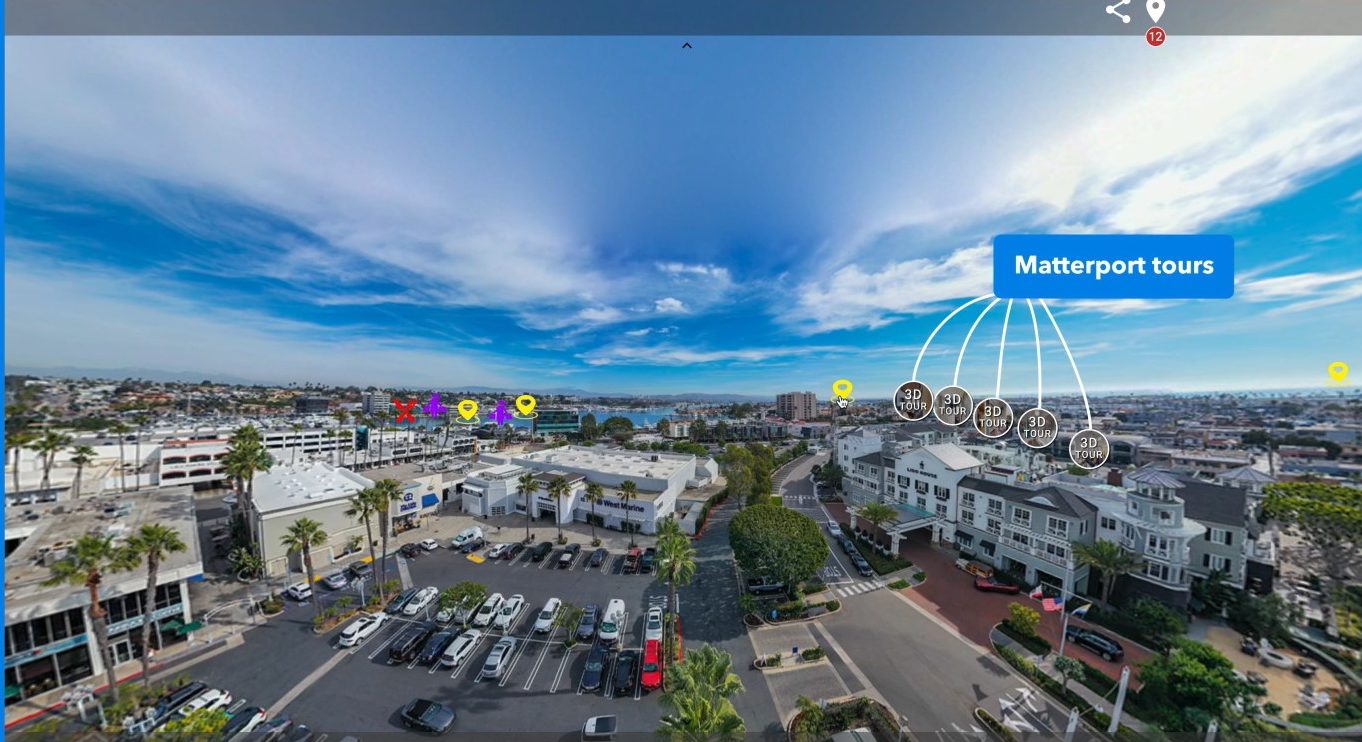what is a virtual image
Virtual images are a fascinating yet often overlooked concept in optics.
Virtual images are a fascinating yet often overlooked concept in optics. But they’re all around us—from the mirror in your hallway to the immersive 360-degree virtual tours you explore online. If you’re a photographer or real estate agent using platforms like www.threesixty.tours, understanding virtual images can dramatically improve how you capture and present spaces.
In this article, we’ll break down what virtual images are, how they’re formed, and why they matter—especially if you’re creating virtual tours. We’ll keep things simple, practical, and packed with real-world examples to help you apply this knowledge right away.
What Is a Virtual Image?
A virtual image is what you see when light rays reflect off a surface or pass through a lens and appear to come from a location where they don’t actually meet. Your bathroom mirror is a perfect example. You see yourself in it, but there’s no actual image behind the glass—it’s just how your brain interprets the light.
This concept isn’t just theoretical. It’s used in everything from camera viewfinders to augmented reality apps. And for users of www.threesixty.tours, understanding virtual images can help you create more compelling and immersive virtual experiences.
In this guide, we’ll cover:
- What makes virtual images different from real images
- How mirrors and lenses create virtual images
- Real-world uses in photography, real estate, and more
- Practical tips for improving your virtual tours
Let’s dive into the science—and art—of virtual images.
Characteristics of Virtual Images
To understand virtual images, it helps to know what sets them apart from real ones. Here are the key traits that define them.
How Virtual Images Form
Virtual images are created when light rays diverge after bouncing off a mirror or bending through a lens. Your brain traces these rays backward in a straight line, assuming they came from a single point. That’s why the image looks like it’s behind the mirror or lens—even though no light is actually there.
There are two main tools that create virtual images:
-
Mirrors – Plane mirrors (like the one in your bathroom) and convex mirrors commonly produce virtual images. The reflection you see is a virtual image.
-
Lenses – Depending on the setup, concave and convex lenses can also create virtual images. For example, a magnifying glass held close to an object produces a larger, upright virtual image.
Key Properties of Virtual Images
-
Upright Appearance
Virtual images are usually upright. That means they maintain the same orientation as the original object. In contrast, real images are often flipped upside down. -
Magnification
These images can appear larger or smaller than the object. This is incredibly useful in photography and virtual tours when you want to emphasize certain features. -
Location
Virtual images appear on the same side of the lens or mirror as the object. That’s why your reflection seems to be “inside” the mirror. -
Can’t Be Projected
You can’t project a virtual image onto a screen. It exists only as a visual perception. -
Coexistence with Real Images
In some cases, both real and virtual images can exist at the same time. For instance, a camera lens might project a real image onto a sensor while the viewfinder shows a virtual one.
Understanding these traits can help you make better choices when shooting photos or designing a virtual tour on www.threesixty.tours. You’ll know how to use light and angles to your advantage, making your visuals more engaging and lifelike.
How Virtual Images Are Formed
Now that we know what they are, let’s look at how virtual images are created through different optical tools: lenses and mirrors.
Lenses
Lenses bend light (a process called refraction). Depending on their shape, they can either spread light rays apart (diverge) or bring them together (converge).
Concave Lenses (Diverging)
Concave lenses are thinner in the middle and thicker at the edges. When light passes through, it spreads out. Your brain interprets the diverging rays as coming from a point behind the lens, forming a smaller, upright virtual image. These lenses are common in eyeglasses for nearsightedness.
Convex Lenses (Converging)
Convex lenses are thicker in the middle. If you hold a convex lens close to an object, it creates a magnified virtual image. This is the principle behind magnifying glasses and macro photography. It’s also useful in virtual tours for highlighting fine details.
Mirrors
Mirrors reflect light, and the shape of the mirror determines how the image is formed.
Plane Mirrors
These flat mirrors create virtual images that are upright and the same size as the object. The image appears to be the same distance behind the mirror as the object is in front of it.
Concave Mirrors
These curve inward. When an object is placed close to the mirror (within the focal point), it creates a large, upright virtual image. Makeup mirrors use this principle to magnify your reflection.
Convex Mirrors
These curve outward and always produce smaller, upright virtual images. They’re used in car side mirrors and security mirrors because they offer a wide field of view.
Real-World Scenarios
Understanding how virtual images form can help you create better 360-degree tours. Here’s how:
- A wide-angle lens can make a room look more spacious by creating a virtual image that exaggerates depth.
- Placing mirrors strategically in a room can enhance lighting and make the space feel larger in your virtual tour.
For more tips on creating immersive virtual tours, check out www.threesixty.tours and explore how professionals are using optics to elevate their visual storytelling.
Applications of Virtual Images
Virtual images aren’t just a physics concept—they’re part of your daily life and your professional toolkit.
Everyday Examples
Bathroom Mirrors
This is the most common virtual image. You see yourself, upright and life-sized, in a mirror every day.
Makeup Mirrors
These use concave mirrors to create magnified virtual images. The same principle helps in macro photography to capture fine details.
Technological Applications
Optical Devices
Most cameras project real images onto sensors. But the viewfinder often displays a virtual image. Knowing this helps photographers choose the right lens and settings when capturing spaces for virtual tours.
Projectors
Although projectors display real images, they often use internal optics that manipulate virtual images to fine-tune focus and clarity.
AR and VR
In augmented and virtual reality, virtual images overlay digital content onto your view of the world. These images aren’t physically present, but they feel real through a screen or headset. Real estate agents can use this to offer virtual walkthroughs of properties—no travel required.
Platforms like www.threesixty.tours allow you to integrate 360-degree virtual tours with AR/VR systems, giving clients a fully immersive experience.
360-Degree Virtual Tours
The tours themselves are built on virtual images. Panoramic photos are stitched together to create a navigable, lifelike environment. Understanding how these images are perceived helps you design more intuitive and visually appealing tours.
For example:
- Use mirrors to add light and depth to a room.
- Choose lenses that minimize distortion to keep virtual images accurate.
Differences Between Virtual and Real Images
To use virtual images effectively, it’s important to know how they differ from real images.
What Is a Real Image?
A real image is created when light rays actually meet at a point. These images can be projected onto a screen or captured by a camera sensor. They’re usually inverted and vary in size depending on the setup.
Key Differences
-
Orientation
Virtual images are upright. Real images are usually upside down. -
Location
Virtual images appear on the same side of the lens or mirror as the object. Real images form on the opposite side. -
Projectability
You can’t project a virtual image onto a screen. You can project a real image.
Examples
- Virtual Image: Your reflection in a mirror, or the magnified image in a makeup mirror.
- Real Image: A photo captured on a camera sensor, or an image projected onto a wall.
Knowing these differences helps you decide how to frame your shots and choose the right gear when creating content for virtual tours.
Conclusion
Virtual images might seem like a science class topic, but they’re actually a key part of how we see and share the world—especially in photography and real estate.
Key Takeaways
- Virtual images are formed when light rays diverge and appear to come from a point behind a mirror or lens.
- They’re always upright and can’t be projected onto a screen.
- Mirrors and lenses create virtual images in different ways, depending on their shape and position.
- Virtual images power everything from makeup mirrors to AR headsets and 360-degree virtual tours.
- Knowing the difference between virtual and real images helps you make smarter choices in your work.
Why This Matters for Threesixty.tours Users
If you’re using www.threesixty.tours to create virtual tours, understanding virtual images gives you a creative edge. You’ll know how to manipulate light, angles, and lenses to enhance your visuals. You’ll also be better equipped to design tours that feel real, immersive, and engaging.
Want to see how other professionals are using this knowledge? Visit www.threesixty.tours to explore featured tours and get inspired.
For more in-depth information on optics and image formation, check out this educational resource from the University of Arizona’s College of Optical Sciences: https://optics.arizona.edu/. You might also enjoy this article from Physics Classroom that breaks down the difference between real and virtual images in an easy-to-understand format: https://www.physicsclassroom.com/class/refln/Lesson-3/Real-and-Virtual-Images.
So the next time you look into a mirror or design a virtual tour, remember: what you see may be virtual—but the impact you make is very real.
Word Count: Approx. 2,100 words.


